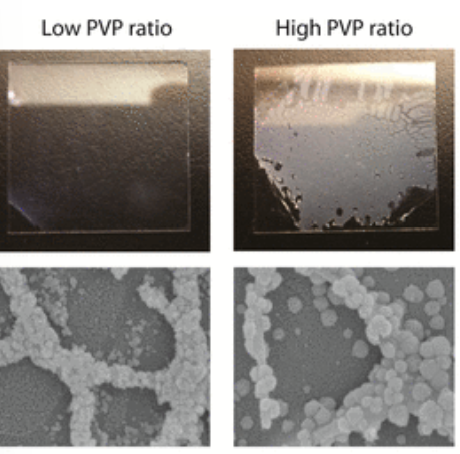Toward High Conductivity of Electrospun Indium Tin Oxide Nanofibers with Fiber Morphology Dependent Surface Coverage: Postannealing and Polymer Ratio Effects
- 저자
- Sangcheol Yoon, Hyebin Kim, Eun-Sol Shin, Jun Nyeong Huh, Yong-Young Noh, Byoungchoo Park*, Inchan Hwang*
- 저널명
- ACS Applied Materials & Interfaces, 9, 39, 34305–34313 (2017)
- 년도
- 2017
- Link
- https://doi.org/10.1021/acsami.7b08987 400회 연결
[Abstract]
High electrical conductivity of metal oxide thin films needs uniform surface coverage, which has been the issue for the thin films based on electrospun nanofibers (NFs) that have advantage over the sputtered/spin-coated films with respect to large surface area and mechanical flexibility. Herein, we investigated a reduction in the sheet resistance of electrospun indium tin oxide (ITO) NF films with improved surface coverage. We found that the surface coverage depends significantly on the electrospinnable polymer concentration in the precursor solutions, especially after post-hot-plate annealing following the infrared radiation furnace treatment. The postannealing process increases crystallinity and oxygen vacancies. However, with a higher PVP content, it makes the surface of ITO NFs more prominently rough as a result of the formation of larger sphere-shaped ITO particles on the NF surface, which gives rise to poor surface coverage. A less poly(vinylpyrrolidone) (PVP) content in ITO NF films by electrospinning for short deposition times was found to improve surface coverage even after postannealing. The sheet resistance notably decreases, down to as low as 350 Ω/sq, with a high transmittance of over 90%. Our study provides an understanding on how to achieve high electrical conductivity of ITO NF films with high surface coverage, which can be utilized for the optoelectronic and sensing applications.
